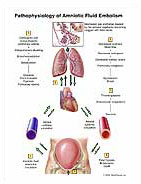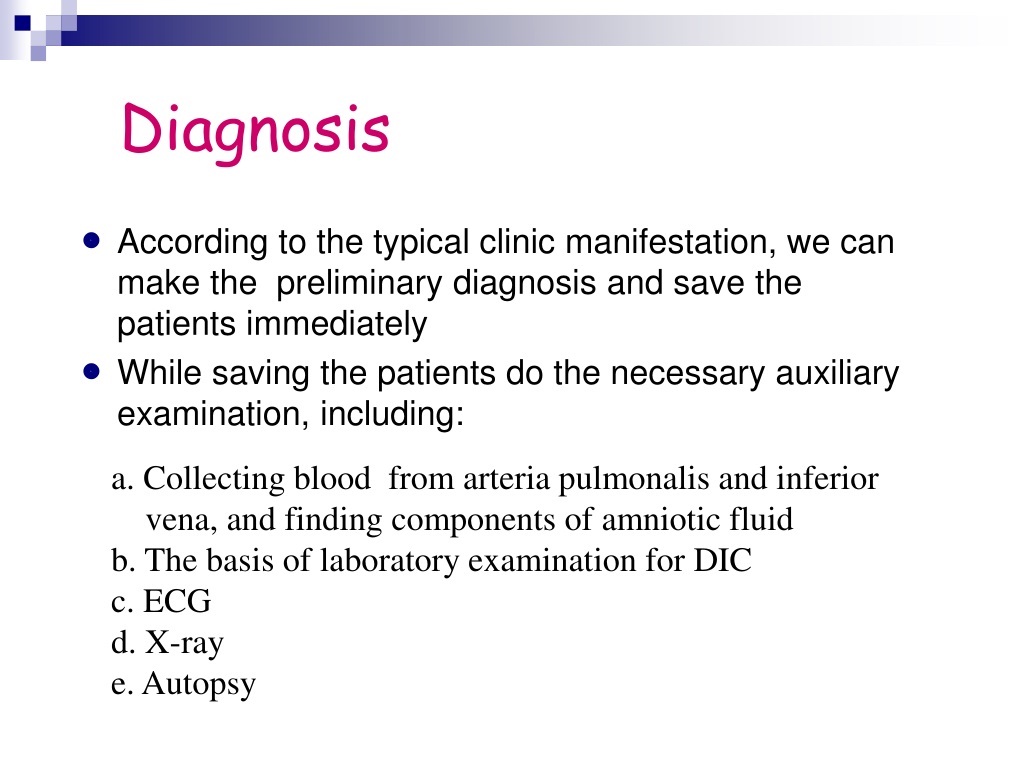

Atypical amniotic fluid embolisms are rare occurrences in which one or more of these criteria are not met, yet the patient is suspected to have an AFE through exclusion or histologic examination.

Notably, not all AFE cases meet the four diagnostic criteria. The current diagnostic criteria for AFE is the presence of the following tetrad: sudden cardiorespiratory arrest (or both hypotension and respiratory compromise), disseminated intravascular coagulation (DIC), onset during labor or within 30 minutes of placental delivery, and absence of fever as defined as a temperature greater than or equal to 38.0☌. Amniotic fluid embolism is a clinical diagnosis of exclusion, hypothesized to occur when disruption of the maternal-fetal membranes allows amniotic fluid to enter the maternal circulatory system resulting in the occlusion of pulmonary vasculature and the activation of humoral and immunological processes due to the presence of the foreign fetal tissues. Maternal mortality rate is between 20% and 40%, while the perinatal mortality rate is 20–25% with 50% of neonates suffering from neurologic impairment. Despite the low incidence, 13.7% of all maternal deaths in the United States are due to AFE.

The estimated incidence is between 1.9 and 11 per 100,000 deliveries. Amniotic fluid embolism (AFE) is a rare but potentially devastating complication of pregnancy.


 0 kommentar(er)
0 kommentar(er)
